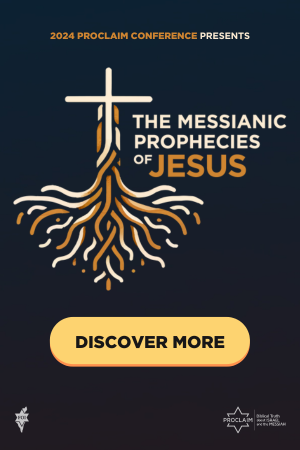The Eastern Gate
The ground in front of the Eastern Gate of the Temple Mount was still soft from the heavy rains. Confidently, the archaeology student stepped back from the gate to capture its entire view in his camera. It never crossed his mind that on this beautiful spring day of 1969 in Jerusalem, he soon would fall knee-deep into human bones.
The present Eastern Gate is located on the eastern wall of the Old City, opposite the Mount of Olives. The massive masonry is an impressive structure. Some sections date to the time of Nehemiah in the sixth century B.C.; other sections, to the time of King Herod.
According to Jewish tradition, the gate had been called the Shushan Gate. Interestingly, Nehemiah was at the Persian summer palace in Shushan when he heard about the situation at Jerusalem (Neh.1:1). It was said that the gate’s entrance bore an embossed sculpture of that ancient Persian summer palace. Rabbis have suggested that its purpose was to make the people ever mindful of where they came from and to commemorate the 538 B.C. decree of Persian King Cyrus, who ended Israel’s seventy-year captivity and allowed the Jewish people to return to their land and rebuild the Temple (Ezra 1:1–3).
In A.D. 70 the Romans destroyed the gate. In A.D. 629 a ceremonial gate was constructed to receive a Byzantine emperor who allegedly was returning the “true cross” stolen by the Persians in 614. Later, during the Crusader period, the Muslims sealed the gate, ostensibly for security reasons. Yet some Jewish people feel the Muslims believed it would prevent the Messiah from entering. The present sealed gate was the work of the Ottoman Sultan Suleiman in 1538.
According to Bible prophecy and tradition, the Messiah will come from the east of Jerusalem (Zech. 14:4). It was also taught He would ride in on a donkey (Zech. 9:9). The general understanding has been that Messiah will enter the Temple through the Eastern Gate. Thus this gate became associated with Messianic anticipation.
In fact, someone recently put an unsightly graffiti on a stone of the sealed gate. Spray-painted in Hebrew is the word Moshiach (Messiah).
Shortly before His crucifixion, Jesus mounted a donkey at Bethphage on the Mount of Olives and rode toward the Temple (Mt. 21:1–5). Amid shouts of Hosannas from the people, Jesus presented Himself as their Messiah-King.
It is probable He rode through the Eastern Gate. Interestingly, God referred to Cyrus as his “shepherd” and “anointed” (Isa. 44:28; 45:1). This designation makes Cyrus a type of Israel’s true Shepherd and Messiah who will one day come to this gate and set Israel free.
Many in the Christian community see the present sealed gate linked with the prophecy of Ezekiel 44:1–3, which says that the gate “toward the east…shall be shut…because the LORD, the God of Israel, hath entered in by it, therefore, it shall be shut. It is for the prince;…he shall enter by the way of the porch of that gate.” Since Jesus, the God of Israel, had already entered through that gate (Palm Sunday), it will remain shut until Jesus the King returns.
The archaeology student, slightly disoriented from his eight-foot fall, was uninjured. He adjusted his eyes to the semidarkness of the tomb. Judging from the many bones and skulls, the remains of thirty or forty people must lie there. Some of the bones were still grotesquely connected by cartilage. By chance, he saw an arch of smooth, wedge-shaped stones that could well have been part of an ancient gate. It was directly below the present sealed gate.
He took his picture and scurried out of the hole. The next day he returned to find the tomb resealed. Only the dim photos of the arch remained. Tantalizing to imagine, it just could have been a part of the original gate— the very one the Prince of Peace entered and one day will enter again (Ps. 24).







Dear Peter Colon,
I agree that many Christians, Augustine, and all Roman Catholics believe that Ezek 44:1-2 refers to the Eastern Gate of Jerusalem and that it is proof that Mary was a Perpetual Virgin. But this is impossible and fatally flawed for many reasons:
1. The Eastern gate in Ezekiel is the Eastern Gate of the Temple, not the city of Jerusalem.
2. The Eastern Golden Gate of the City was not sealed (walled up) until hundreds of years after Mary by Suleiman the Muslim Emperor of the Ottoman Empire in 1541. But the biblical meaning of “closed” and “sealed” is completely different. A closed gate can be re-opened and shut over and over. A sealed gate can’t be. Suleiman mistakenly thought by sealing the the Eastern Gate of Jerusalem he could block the Messiah from entering the city when he comes. But he not only got the wrong gate, but even the Eastern Golden Gate of Jerusalem will be breached and multitudes from every nation on earth will enter it during the Millennium, but not a single Muslim.
3. The Temple, and therefore the eastern gate (The Temple) in Ezekiel won’t even exist until the Millennium after Christ physically returns to the earth to set up his Kingdom.
4. The prince in Ezekiel 44 and 45 can’t be Jesus because he makes sacrifices for his sins. But Jesus was without sin. Jesus was the Once and for All Sacrifice for the sins of the world.
5. The prince in Ezekiel goes back and forth through the gate of the inner sanctuary, not just once. So once again, this can’t be Jesus and the gate can’t be Mary as a Perpetual Virgin because this would mean the prince came through the gate only once. But once Christ was born, Joseph entered Mary’s gate over and over.
So the entire Biblical passage alone demolishes the Principality of Roman Catholicism and Mary being the Co-Lamb of God.
also see:
https://www.gotquestions.org/eastern-gate-Jerusalem.html
and
Global Conspiracy to Steal the Land of Israel:
https://studylib.net/doc/25187788/global-conspiracy-to-steal-the-land-of-israel-by-james-su
Shalom,
James
This is good and wonderful
Jesus, come quickly.
Beautiful! Thank you!